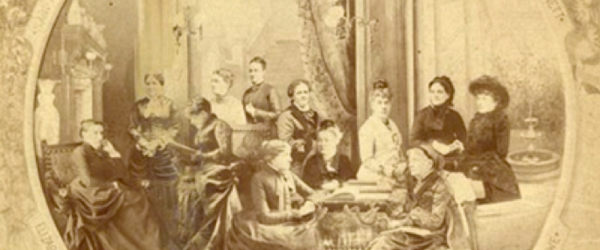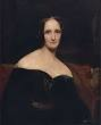-
About
- About Listly
- Community & Support
- Howto
- Chrome Extension
- Bookmarklet
- WordPress Plugin
- Listly Premium
- Privacy
- Terms
- DMCA Copyright
- © 2010-2025 Boomy Labs


 Lire Books
Lire Books
Listly by Lire Books
The female writers of the 19th century paved the way for modern feminism through their reflections on society and culture. Among the most influential were such revolutionary English authors as Jane Austen, the Brontë sisters and Mary Anne Evans (George Eliot).
Source: http://www.pbs.org/wgbh/masterpiece/wives/writers_text.html

Fanny Burney's upbringing resembled that of a heroine of an 18th-century novel. The daughter of musicologist William Burney, she was born into an artistic and well-connected family. Her formal schooling was minimal -- she didn't learn to read or write until at least age 10 -- but her education in decorum and conduct began at an earlier age, typical of middle-class girls in England in the mid-1700s.

Maria Edgeworth is often considered either the 'Irish Jane Austen' or the 'female Sir Walter Scott,' although her writing actually influenced both. Her novels and stories fall into three categories: sketches of Irish life, commentary on contemporary English society, and instruction in children's moral training. Published between 1796 and 1834, her work is characterized by both a Scott-like Romantic attachment to the past and an Austenian wit and rationalism.

Jane Austen, whose name itself has become a totem of civility, manners, and etiquette, received little public recognition in her lifetime. The four novels which were published while she lived -- Sense and Sensibility (1811); Pride and Prejudice (1813); Mansfield Park (1814); and Emma (1816) -- appeared without her name on the title page; usually their authorship was attributed only to "a lady."

A number of feminist critics read Mary Shelley's Frankenstein as an elaborate metaphor for childbirth. They draw on the links between creativity and birth that the novel suggests, but it is true that Shelley was physically concerned with birth during the year that Frankenstein was written: She gave birth to a son six months before she began the novel, and completed it four months before the birth of a daughter. Stories of the novel's origins are often rendered in terms of birth as well: Shelley "conceived" Frankenstein on a challenge from Lord Byron and her husband, Percy Bysshe Shelley, to tell the most frightening ghost story. What Mary Shelley produced was not so much a ghost story as a meditation on the dangers of genius and creativity, and of man's responsibility to his own creations, and to the world into which he introduces them.

Tremendously popular in her lifetime, Elizabeth Gaskell now tends to be overshadowed by the Brontës and George Eliot. Cranford (1853) and Wives and Daughters (1866) have been the most acclaimed of her works, although today Mary Barton (1848), her first novel, and North and South (1855) receive more critical attention. The two pairs of novels represent Gaskell's prevailing interests as an author: provincial life and urban issues. In all of her writing, Gaskell was concerned with how individual lives play out against the pressures of history and social life.

The eldest of the three writing Brontë sisters, Charlotte Brontë assumed some of the maternal care of her younger siblings (including a brother, Branwell) after the death of her mother and two elder sisters, Maria and Elizabeth. In The Life of Charlotte Brontë (1857), Elizabeth Gaskell brought the eccentricities of the Brontës's lives in Yorkshire to public view. It is this view of the sisters -- locked into the solitary world of the moors and their own fevered imaginations -- that has persisted. But this image of Charlotte Brontë is incomplete.

Emily Brontë's reputation as such now rests overwhelmingly on her one novel, Wuthering Heights (1847). With its storm-darkened moors and roiling psychological landscape, Wuthering Heights combines some of the most popular mid-Victorian genres -- realism, fantasy, horror, and melodrama -- to produce a novel influenced by the Romanticism of the 19th century's first three decades. Influencing the physically and psychologically violent "sensation novels" which would become so popular in the century's second half, the novel remains singular and category-defying in the canon of British literature.

Born Marian Evans in Warwickshire, her early life, though marked by a private education with tutors, was otherwise a typically provincial one. She lived with her brother and her carpenter-turned-land agent father. After her father's death in 1849, she traveled in Europe and settled in London, where she became associated with the Westminster Review. By the mid-1840s and into the 1850s, Eliot (still as Evans) worked extensively as a translator of contemporary philosophy, most notably of Feuerbach and Spinoza. Her life in London as an editor, reviewer, and translator brought her into contact with a rarefied intellectual community, including the empiricist Herbert Spencer, the feminist Barbara Bodichon, and the writer G.H. Lewes, with whom she lived from 1854 to 1878. (They never married at least in part because Lewes's wife would not grant him a divorce.)

Known in the second half of the 1800s as the "Queen of the Circulating Libraries," Mary Elizabeth Braddon had immediate success as a novelist upon the publication of her first novel, Lady Audley's Secret, in 1862. Her second, Aurora Floyd, which appeared the following year, was equally popular.
